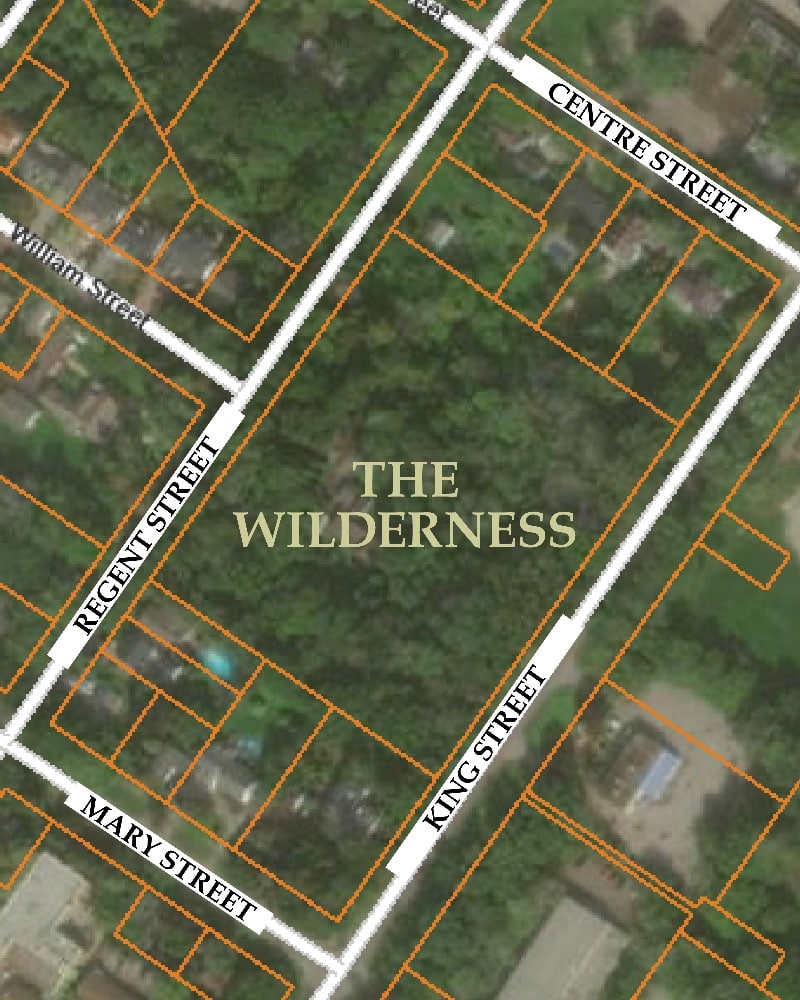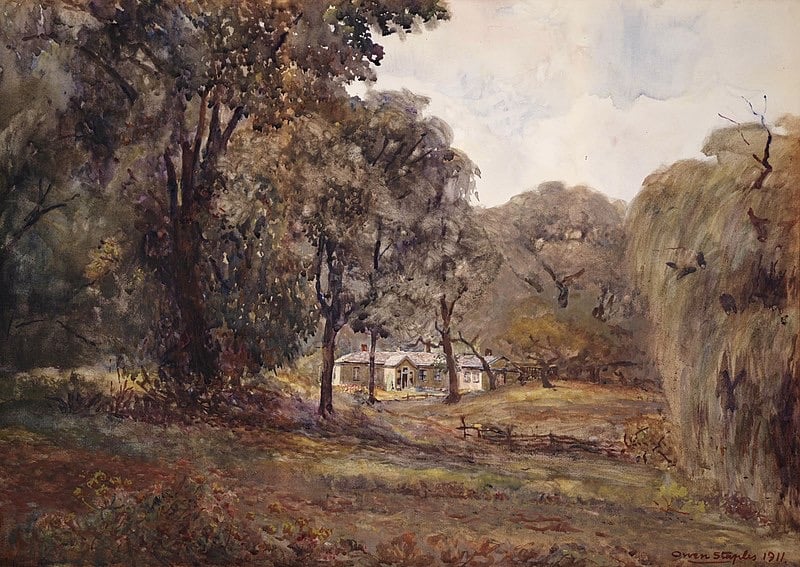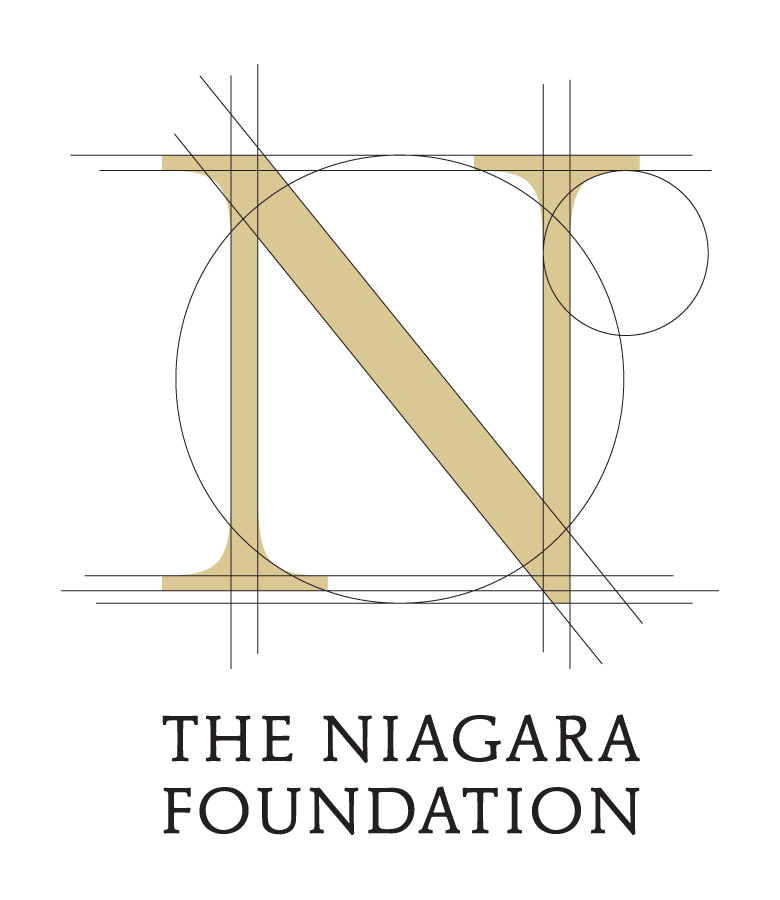Q + A with Dr. Richard Merritt | Author, Historian and Niagara Foundation Board Member
The Wilderness, as it’s been known for over one hundred years, is an almost five-acre parcel of land located at 407 King Street, opposite The Commons, in Niagara-on-the-Lake. The Wilderness is bordered by King, Mary, Regent and Centre Streets, a residential area abutted by single-family houses on the east and west sides. One Mile Creek traverses the property.
Most people walking past the overgrown, deteriorating ‘streetscape’ on either King or Regent streets would be unaware of this remarkable property and its tremendous local and national significance. But while the value of the Wilderness may be hidden from view, the significance of this land is rooted deeply in the natural, Indigenous, military, political and horticultural history that make our town unique and distinctive.

Q: Why is the property historically significant?
Richard Merritt: The Wilderness is a still-intact, privately owned plot of first-growth Carolinian woods that holds great significance to Indigenous and Settler history.
In 1799, the four contiguous lots were presented by the Chiefs of the Six Nations to Ann (Nancy) Johnson Claus in recognition of her family’s “many deeds of kindness.” Ann’s father, Sir William Johnson, as Northern Superintendent of Indian Affairs, had negotiated with 24 First Nations the significant Treaty of Niagara in 1764. Ann’s only son, the Hon. William Claus built the first house on the property which was wantonly destroyed during the War of 1812 by occupying American troops– (a pregnant mother with three young children survived the winter of 1813 in a ‘root cellar’ on the property).
William and his wife Catherine began construction of the present Regency cottage in 1816 and planted extensive gardens surrounding the house and a later carriage house – all carefully recorded in diaries which amazingly have survived to this day.
Q: Where did the name “The Wilderness” come from?
RM: The property, which for some time was called “Geale’s Grove” remained in the Claus family until the 1880s only to be re-occupied by a family member for a decade early in the 20th century. The name “The Wilderness” apparently emerged at this time.
Q: Does The Wilderness have heritage protection of any kind?
RM: In the late 1940s, Mrs. Mary Austin Parker, who had spent part of her youth on the property, purchased The Wilderness. Later joined by her daughters, Isabel, Ruth and Fran, Mrs. Parker was determined to preserve the property for future generations of the public to enjoy and appreciate. Mrs. Parker and her family’s dedicated and inspirational advocacy to maintain the property intact with its unique natural and built heritage has been truly remarkable.
The Town of Niagara-on-the-Lake designated the Wilderness a heritage property in 1994. This designation, which is not permanent (the designation could be removed by Town Council), applies both to the heavily wooded land as well as the entire exterior and interior of the house on the site, as well as the carriage house and the archaeological remains. The house was built in 1816. A creek that meanders through the property is protected by a conservation easement.
The Ontario Heritage Trust has strongly encouraged the preservation of this property.

Q: Who owns The Wilderness now?
RM: Ruth Parker, one of Mrs. Mary Austin Parker’s daughters who passed away in 2013, left instructions for her 50% interest in the property to be passed to an organization that would respect her wishes that the heritage elements of The Wilderness be preserved and maintained for the benefit of the public. Her Executor determined that the organization should be The Niagara Foundation.
The remaining half interest is controlled by Ken Reid, the former husband of the late Kea Reid, who was the daughter of Fran MacKay, Ruth Parker’s sister. Both Ken and Kea Reid resided at The Wilderness when Kea passed away in 2016. Ken Reid, best known to Niagara-on-the-Lake residents as the former canine control officer, still resides on the property. Ken agreed to sell his interest in The Wilderness to the Niagara Foundation in April 2024. The transaction will close later this year.
Q: What happens next?
RM: The Niagara Foundation is fully committed to securing ownership of The Wilderness as quickly as possible, with the intention of assessing, identifying and documenting what is still there, before this unique opportunity is gone.
However, shortly after Kea’s death, Ken Reid initiated legal proceedings to sell the property. The Niagara Foundation has responded by proposing to purchase Mr. Reid’s half interest, at an appraised value that considers both the heritage and environmental restrictions, and to prevent the sale and redevelopment of this heritage asset as a residential development opportunity. This, the Foundation believes, is a direction that remains true to Ruth Parker’s wishes. The matter is now before the courts.
Q: How can Niagara-on-the-Lake residents and others help?
RM: The Foundation is fortunate to have received a leading donation of $1 million from the Goettler Family Foundation. These funds, together with significant donations from several other residents and individual members of the Foundation board, will enable us to acquire stabilize and protect The Wilderness, but we need to add to our war chest to fully capitalize on this heritage treasure. Details on financial support for the Wilderness project are available on the Foundation’s website.
